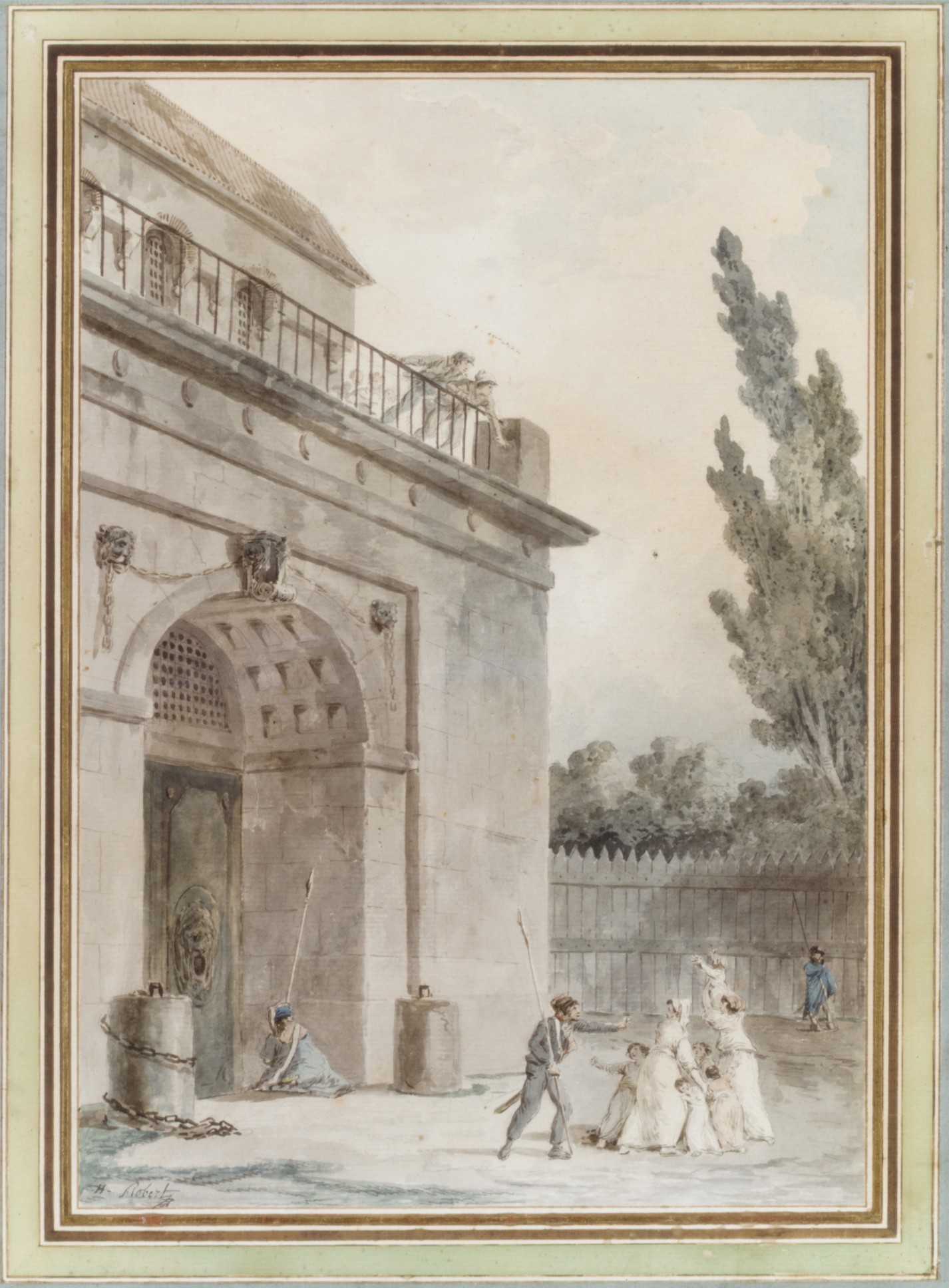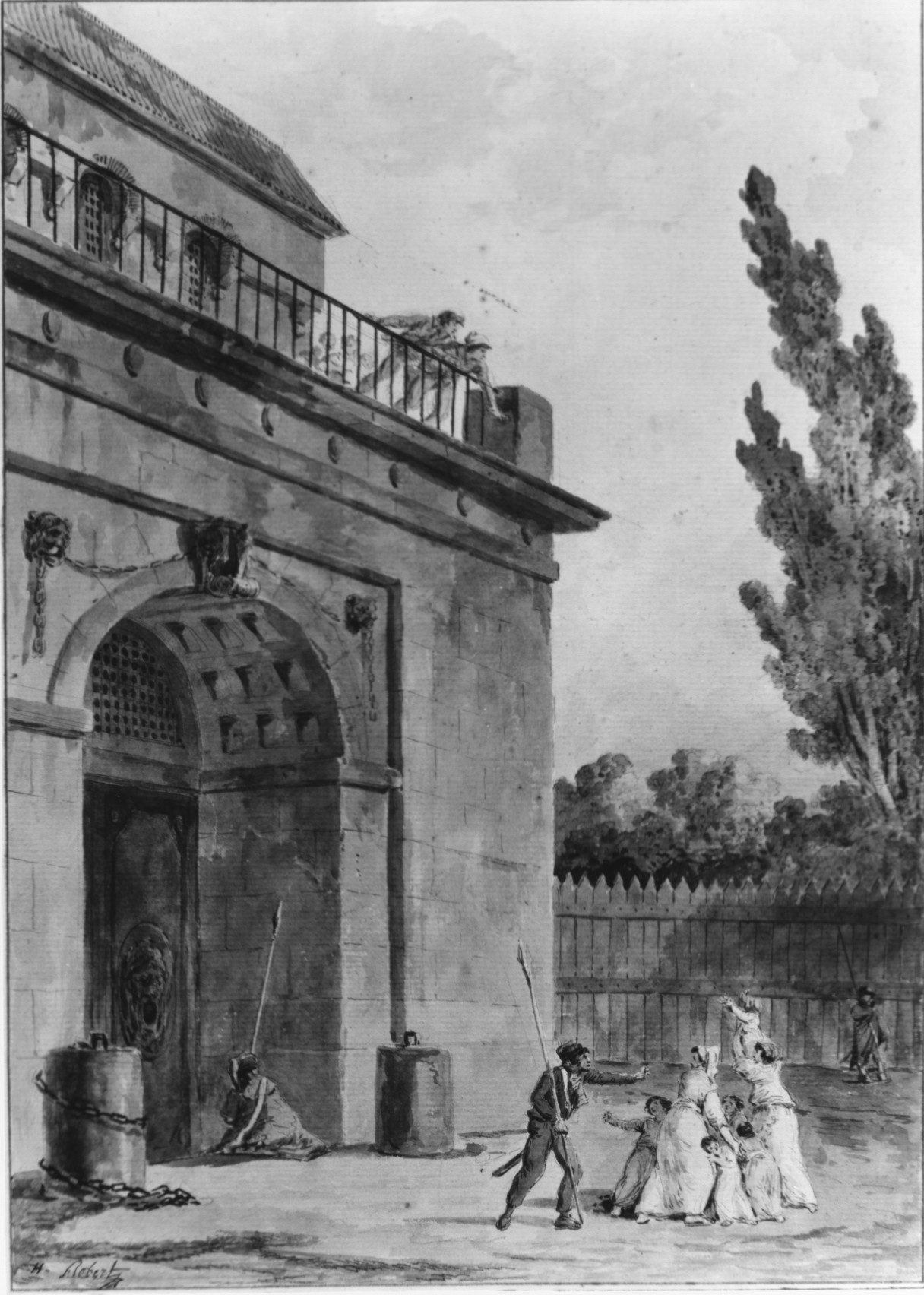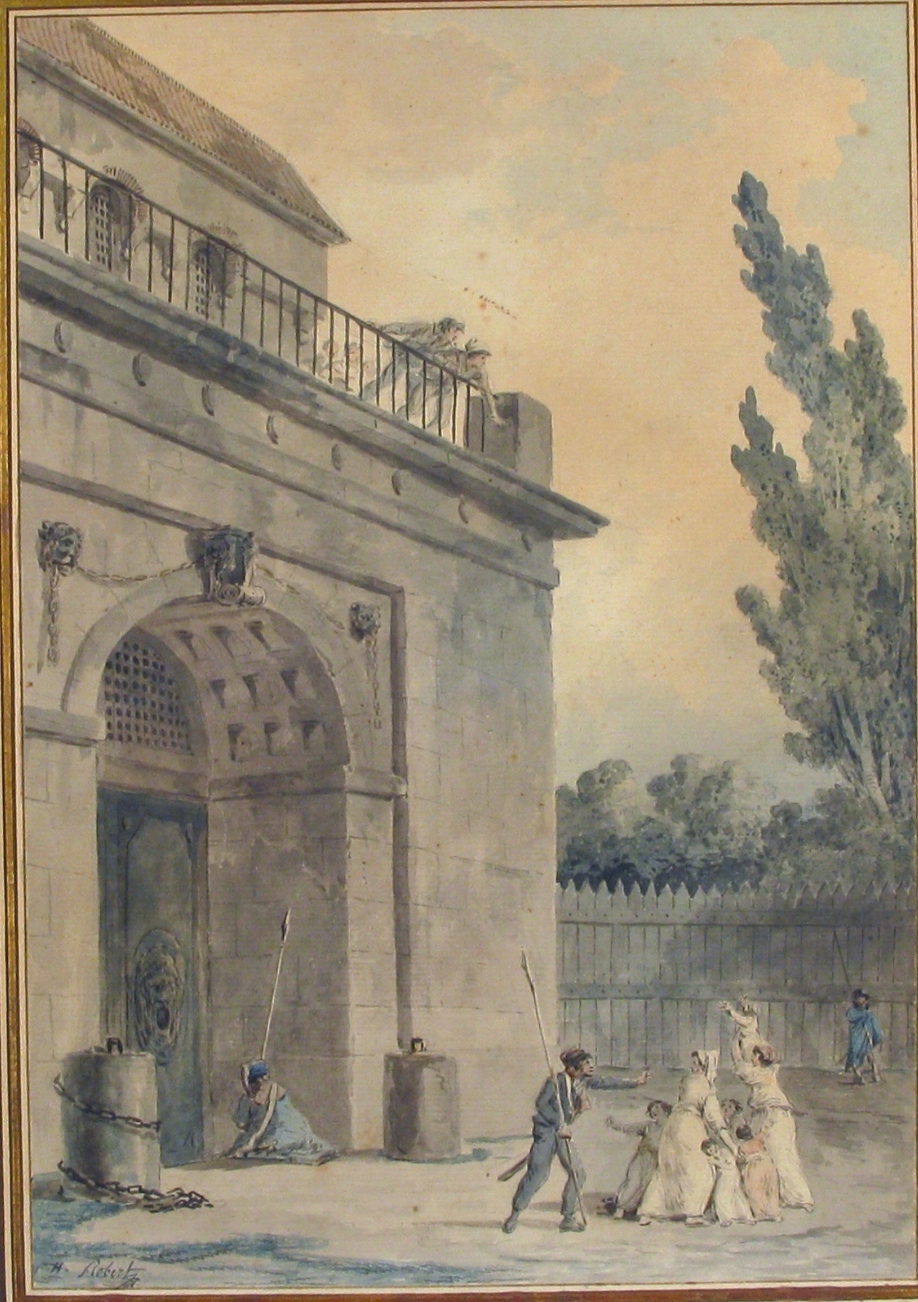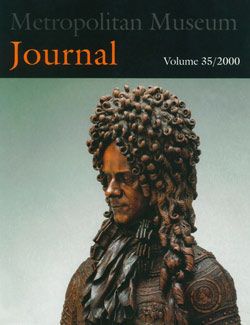Visitors leaving a prison
Hubert Robert French
Not on view
During the second half of the eighteenth century in France, Hubert Robert was a fashionable artist. Painter of ruins, professor of landscape drawing, curator for the future Louvre museum from 1777, and draftsman of the gardens of the king from 1778, he counted among his clientele the royal family, the most eminent members of the court in Versailles, voluntarily exiled aristocrats like the Noailles family, and powerful financiers like the marquis de Laborde. As a result, and like many of his colleagues, Robert endured the consequences of the French Revolution which began in 1789. He was suspected "for his recognized incivism and his links with the aristocrats" by the members of the Convention on October 3, 1793 and was imprisoned in the Sainte-Pélagie prison from October 29, 1793 to January 31, 1794, before being transferred to the Saint-Lazare prison, where he remained until his release on August 4, 1794. If Robert escaped the guillotine, he remained very affected by his imprisonment. In jail, he continued to draw and paint, especially on ceramic dinner plates that he sold at low cost. In watercolors made after his release, themes of imprisonment and liberty continued to play a prominent role.
Visits to prisoners and the hope for liberation were two favorite themes of Robert, during the time he was incarcerated in Saint-Lazare. In 1794 he signed a red chalk drawing, now in the Musée Atger in Montpellier, France (acc. no. A5 V38), which bears two inscriptions in Latin: "in the end the prisons open" inscribed above the doorway from which a woman has come to release birds from a cage and "drawn by Robert while waiting for his release" on a headstone lying on the ground. In two watercolors, whose current location is unknown (published by Jean de Cayeux in exh. cat. Valence, musée de Valence, 1789, Hubert Robert et la Révolution, under no. 33), Robert again took up the idea of a massive building seen at an oblique angle, in front of which are positioned the main protagonists. The motif of a soldier repulsing the advances of a group of women and children seeking to communicate with prisoners is also found in a red chalk drawing from the Musée Carnavalet (acc. no. D. 3535), dated "anno II" (1793-1794 in the revolutionary calendar). The emotional vignette of the small child held aloft with its arms outreached also appears on a canvas that Robert executed in 1794: The visit to the Marquis de Travanet during his detainment at the Saint-Lazare prison (private collection, sale Bayeux, Auction House, 11/11/2013, lot 28). Cayeux had connected the two watercolors mentioned above with a painting then lost, entitled The Farewell of the Children of the Noailles Family to their Condemned Parents, without citing the Met’s drawing, from which it evidently derives. These two works, the Met’s drawing and the painting of the Noailles family, seem to be the latest variations of the set of drawings and paintings described above. Perhaps they were made in the Saint-Lazare prison, when the artist had at his disposal models, unless he had executed them from memory shortly after his liberation. In the absence of signature and date inscription on the two works, one might think they were made in 1794 or 1795. In any case, the theme of families bidding farewell to prisoners must have resonated particularly for Robert, who had earlier lost his own children and would have witnessed the intense attachments of his companions of misfortune, such as the poet Jean Roucher who corresponded from prison with his daughter Eulalie.
Sarah Catala (August 2017)
This image cannot be enlarged, viewed at full screen, or downloaded.
This artwork is meant to be viewed from right to left. Scroll left to view more.










